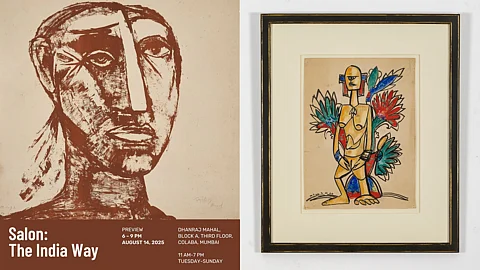
- HOMEGROWN WORLD
- #HGCREATORS
- #HGEXPLORE
- #HGVOICES
- #HGSHOP
- CAREERS
- ABOUT US
- CONTACT US

In 17th-century Paris, the official art exhibition of the Académie des Beaux-Arts, known as the Paris Salon, or simply the Salon, was considered the greatest art event in the Western world. Held annually or biannually at the Louvre, the Salon exhibited paintings, sculptures, and engravings on every available inch of space, and coverage of the event in gazettes of the time birthed the very tradition of modern art criticism.
In the European imagination, the Paris Salon was once the epicentre of the Western art world — a dense, chaotic, and often contentious confluence of artists who shaped visual culture and codified taste. By the late 19th century, however, the Salon's rigid hierarchies became as infamous as the rebellions they inspired. In 1903, a group of painters and sculptors, led by the impressionist Pierre-Auguste Renoir and master sculptor Auguste Rodin, founded the Salon d'Automne as a response to what many considered a bureaucratic and conservative organization.
India, despite its long and complex art history never had a platform quite like the Paris Salon. But what if it did? What would an Indian Salon look like and how would it function? What would happen if the Salon format — both in its visual density and in its public ambition — were transplanted to Mumbai in 2025, reframed through a postcolonial lens?
Nature Morte's Salon: The India Way, curated by Poonji Nath and spearheaded by gallerist Devashi Jain, is an attempt to answer precisely that. The exhibition places works by Pablo Picasso, Pierre-Auguste Renoir, Alberto Giacometti, Paul Signac, and Eugène Delacroix alongside Indian modernists such as Manjit Bawa, Ram Kumar, Zarina Hashmi, FN Souza, Tyeb Mehta, and Sadanand Bakre in an attempt to connect the European and Indian modernist traditions. In doing so, it proposes that Modernism was never a linear story that travelled from West to East. Instead, it was a simultaneity — emerging from different geographies at once, shaped by shared urgencies, but articulated through distinct cultural vocabularies.
Borrowing from the Paris Salon in both spirit and form, the exhibition seeks to reclaim the Salon's original intent: to be a site of public encounter, artistic contestation, and aesthetic possibility. While the 18th- and 19th-century Salons shaped art history in the West, launching careers, dictating taste, and later being challenged by those it excluded, Salon: The India Way reflects on what it means to revisit this structure today, from another geography and another gaze.
For Indian collectors, Salon: The India Way also signals a market shift. As Jain says, "Indian collectors have long engaged with Western art abroad, but few platforms within India offer consistent access to blue-chip international artists." This initiative seeks to collapse that distance — both geographically and intellectually — by creating a space where the art histories of India and Europe are not hierarchically ordered, but intrinsically interwoven. "The Salon series aims to explore modernity from different angles, with different works creating subtle yet unexpected conversations," Jain says.
In revisiting the Salon format through a transnational lens, Nath and Jain offer a crucial historiographical intervention. They invite us to envision a more inclusive and intersectional history of modern art, where Indian artists are not merely appended to Eurocentric timelines but are recognized as equal stakeholders in the global Modernist movement that defined 20th-century visual culture.
Salon: The India Way runs August 15–September 15, 2025, at Nature Morte, Colaba, Mumbai. Follow Nature Morte for more information.
